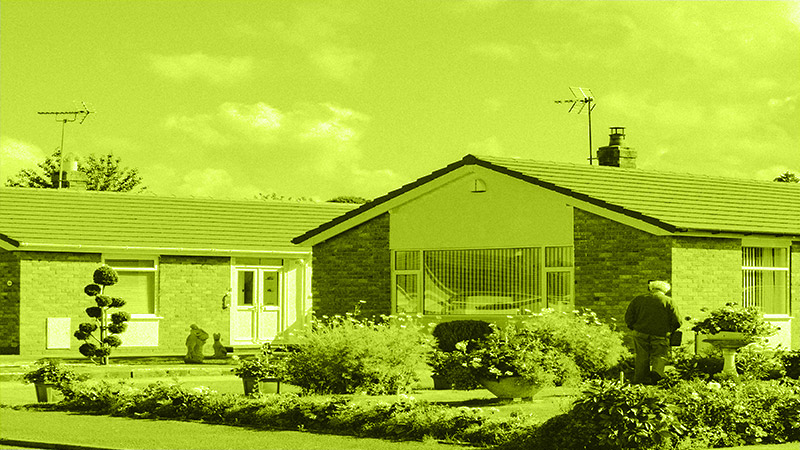Remortgaging early, where you switch your current mortgage to a new deal with a different lender or your current one shortly after securing it, can offer various advantages.
It can help you adapt to new circumstances, help you adjust to new circumstances, and allow you to explore your options.
However, it also comes with various considerations and challenges. This guide explores everything you need to know about remortgaging six months after purchase to help you make an informed decision.
How Soon Can You Remortgage a Property After Purchase?
Most lenders allow you to remortgage to a new deal six months after you’ve owned the property based on the date your name was registered on the title deeds as the owner with the Land Registry. This is called the six-month rule.
However, not all mortgage lenders offer this option. You must also consider how viable remortgaging is for your financial situation.
Exiting your existing mortgage to activate a new deal will come with costs.
You may need to pay a penalty if you initially signed up for a two-year, three-year, or five-year deal on a discounted or fixed-rate mortgage and exit before the end of that period. In some cases, it may still be your best option.
What Is the Six-Month Rule?
The six-month rule is more of a guidance than a law or rule. The Council of Mortgage Lenders (CML) issued the rule to close a loophole where property investors and homebuyers could increase their borrowing to 100% soon after buying a property.
The rule encourages lenders not to accept applications against a property until the owner remains registered at the Land Registry for at least six months.
The guidance applies to UK mortgage lenders, conveyancers, and solicitors, where you can make mortgage applications.
Lenders interpret the rule differently and apply it to their lending criteria. Some choose to lend after six months, others extend it to 12 months, and some even lend without requiring a minimum ownership period.
What Is a Day One Mortgage?
Although they’re called day-one mortgages, the term usually applies to remortgage applications within the first six months of owning a property.
Day-one mortgages are rare since most lenders will not offer you a remortgage product if you’ve only owned the property for six months or less.
It can also be challenging to prove you’re the property owner since it can take months after you’ve purchased a property for the Land Registry to add you to the title deeds.
This can cause delays, and you may need your solicitor to confirm property ownership.
What is the Purpose of Waiting Six Months?
The main aim of the six-month rule is to prevent money laundering and mortgage fraud.
Before the 2008 crash, you could purchase properties using a mortgage or undeclared cash and apply for a remortgage with a new lender immediately after completion using a higher valuation than the purchase price.
It was easy for people intent on money laundering to pay cash for properties and immediately remortgage to get the money back out.
Lenders were left fully exposed, and during the crash, valuations found the properties to be worth less than the outstanding mortgage, resulting in huge losses for banks and lenders.
The rule to wait six months was necessary to stop such issues and back-to-back transactions.
Why Would You Want to Remortgage Early?
There are many genuine and valid reasons you may want to remortgage within a short period after taking ownership of the property. These include:
- You recently inherited a property and want to release some equity or capital.
- Your financial situation has suddenly changed, and you want to remortgage and release some equity.
- You initially chose a variable-rate mortgage, and a rapid rise in interest rates doesn’t suit your current needs.
- You’ve finished renovations, raised the property value, and want to borrow against the new value.
- You purchased the property using money from friends and family to speed up the process and want to pay them back.
- You used a bridging loan to buy the property and want to repay it.
- You want to increase your borrowing to finance debt consolidation or home improvements.
- You purchased the property at auction and want a long-term mortgage.
- You initially bought an uninhabitable property, and it is now ready for a mainstream mortgage after some developments.
Requirements to remortgage sooner
Several lenders will consider your remortgage application within six months, but they’ll scrutinise it and only approve it in some instances.
Most eligibility requirements are similar to other mortgages, but you must provide additional documentation depending on why you’re remortgaging. These include:
- A purchase audit trail.
- A solicitor’s confirmation that you’ve requested an update at the Land Registry if they haven’t listed you yet as the owner.
- A completion statement confirming the property’s original purchase price.
- Evidence for increased valuation, such as completed renovations or developments.
Factors To Consider When Remortgaging 6 Months After Property Purchase
You must consider various to determine whether remortgaging six months after the property purchase is the best option. These include:
Early Repayment Charges (ERCs)
You may face penalty charges for exiting before the end of the deal if your current mortgage has ERCs.
These charges compensate the lender for the interest they would have earned over the fixed term of the mortgage.
The charges usually decrease over time and may not apply once you reach the end of your fixed or introductory period.
Market Conditions
Ensure you monitor interest rates and market conditions when making your decision. You might consider remortgaging when interest rates are lower than your current rate to save money on your monthly payments.
Lender Policies
Different lenders have varying policies regarding when you can remortgage. Some may have specific timeframes or waiting periods, so it’s vital to check your existing mortgage agreement to avoid hefty fees and penalties.
Final Thoughts
The market for remortgaging soon after buying a property is limited and includes many specialist lenders. As a result, it’s better to seek expert advice from brokers experienced in such cases to help you find the best deal.
A mortgage advisor can present the options to you, prepare your application for the best possible outcome, and assist you every step of the way.
Call us today on 03330 90 60 30 or contact us to speak to one of our friendly advisors.
 03330906030
03330906030












